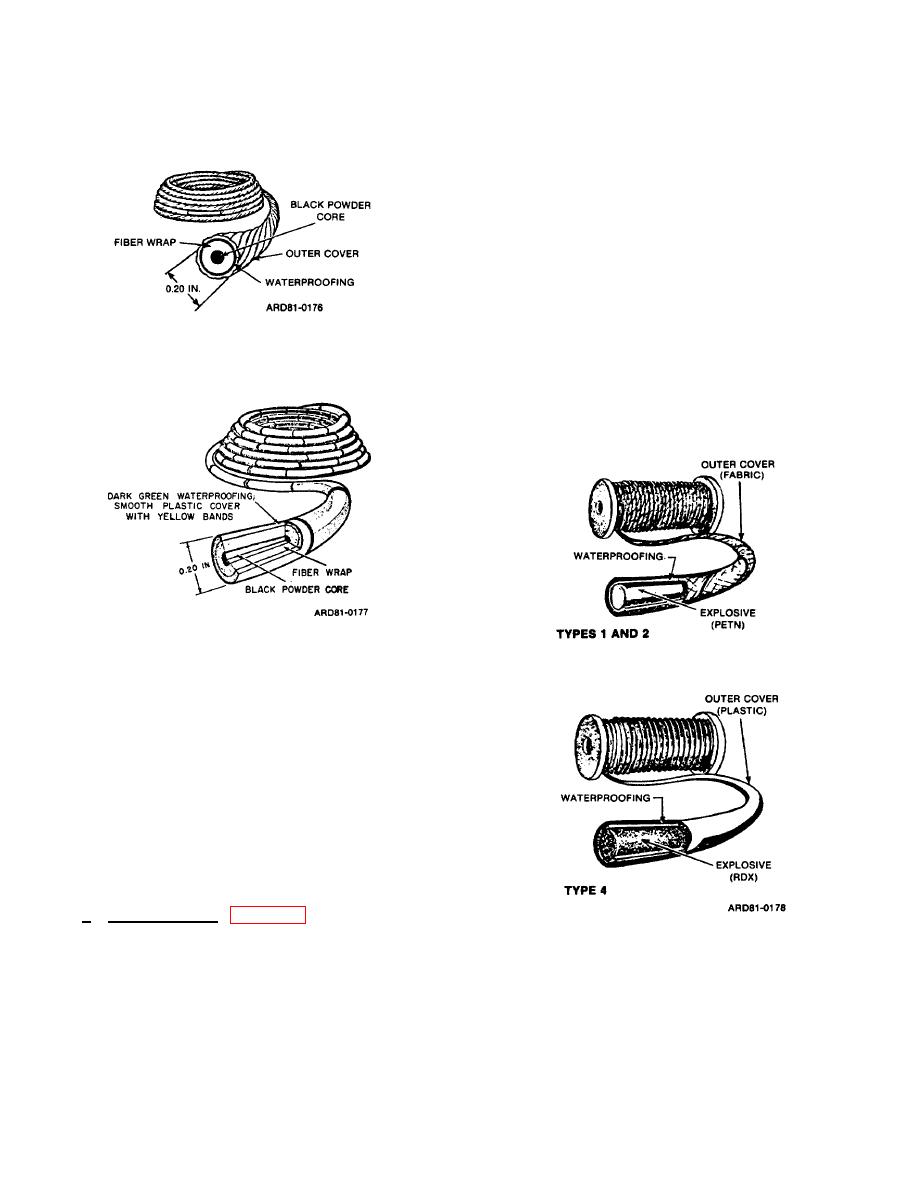 |
|||
|
|
|||
|
|
|||
| ||||||||||
|
|
 TM 9-1300-277
consists of a core of PETN or RDX in a textile tube
coated with a thin layer of asphalt. On top of this is an
outer textile cover finished with a wax gum composition
or plastic coating. It transmits a detonating wave from
one point to another at a rate of between 20,000 to
21,000 feet per second (partially submerged
watersoaked detonating cord will detonate if initiated
from a dry end). Although it does not lose its explosive
properties by exposure to low temperatures, the
covering becomes stiff and cracks when bent. Thus,
great care is required in using detonating cord primers in
arctic conditions. Detonating cord is issued in a variety
of types and classes including commercial types.
Plastic reinforced and wirebound types are available.
Detonating cord is used to prime and detonate other
explosive charges.
When its explosive core is
Figure 4-9. Safety fuse.
detonated by blasting cap or other explosive devices, it
will transmit the detonation wave to an unlimited number
of explosive charges.
Figure 4-10. M700 time fuse.
This fuse is similar to safety fuse and may be used
interchangeably with it. The fuse is a dark green cord
0.2 inches in diameter with a plastic cover. Depending
upon the time of manufacture, the cover may be smooth
or have single bands around the outside at 12 or 18 inch
intervals and double bands at 5foot or 90-inch intervals.
These bands are provided for easy measuring purposes.
The burning rate is approximately 40 seconds per foot.
However, the burning rate always must be tested in the
same manner as that for safety fuse.
At arctic
temperatures, the outside covering becomes brittle and
cracks easily.
d. Detonating cord (fig. 4-11). Detonating cord
(also known as primer and commercial type Primacord)
Figure 4-11. Detonating cord
4-11
|
|
Privacy Statement - Press Release - Copyright Information. - Contact Us |